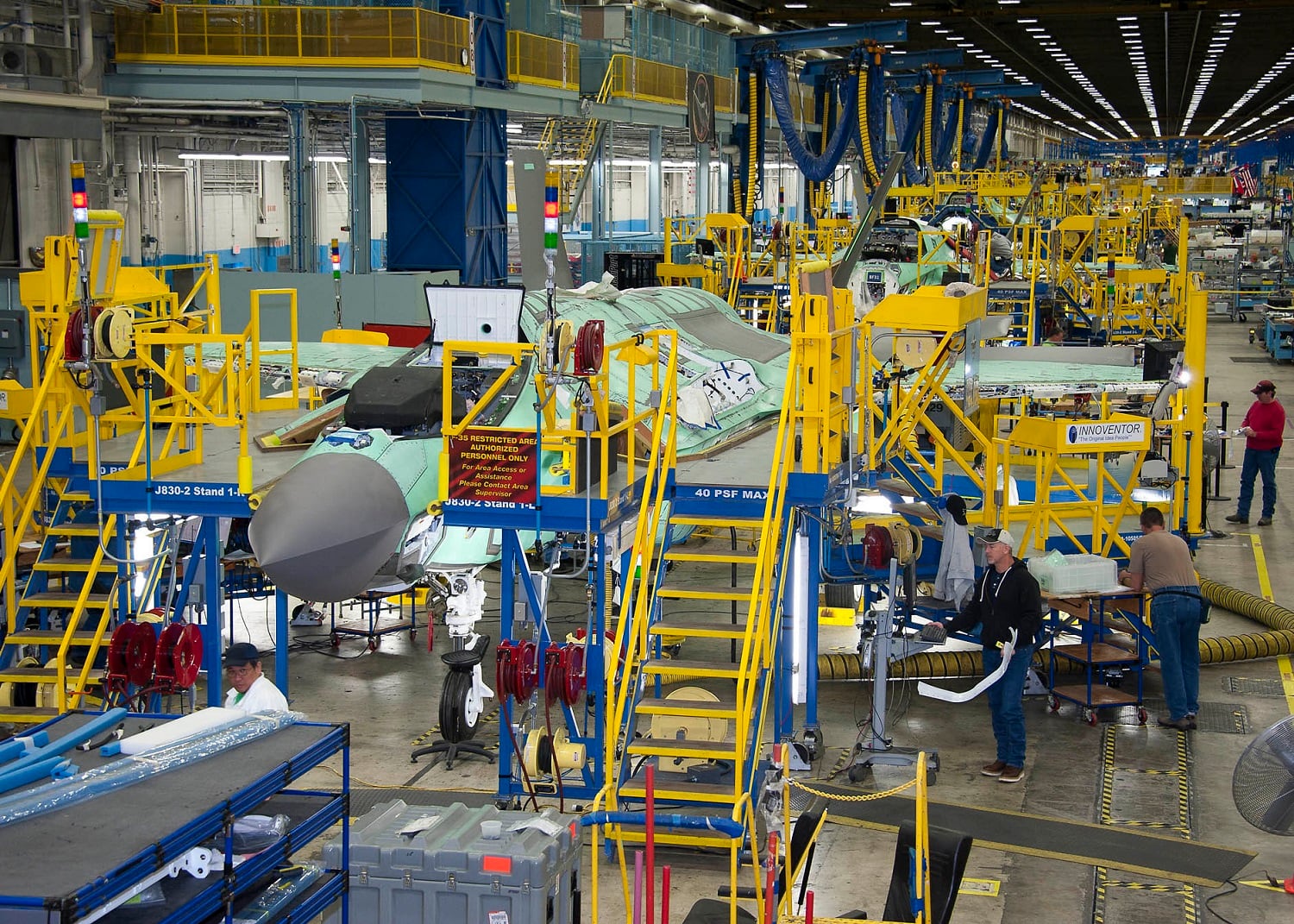WASHINGTON — As the production rate of Lockheed Martin’s F-35 joint strike fighter goes up, the company is wrestling with quality escapes involving the jet’s low observability features, which now amount to about half of all defects on the aircraft, the company’s vice president of the program revealed Monday.
Last week, Vice Adm. Mat Winter, the head of the government’s F-35 Joint Program Office, slammed Lockheed for what he sees as its too-slow progress on eliminating so-called quality escapes — errors made by Lockheed’s workforce that could include drilling holes that are too big or installing a dinged part.
While those errors are minor, the rework done to bring the plane up to requirements is driving up the amount of money and time spent producing an airplane, Winter said.
RELATED

Speaking to reporters at Lockheed’s media day on Monday, Jeff Babione acknowledged that low observability, or LO, capabilities in particular are posing a challenge to the company.
In part, that’s because they are so unique and because production is ramping up quickly.
“That’s something that no other weapon system since the F-22 has had to do, and the F-22 never did it at the rates that we’re trying to do it. Once we get a handle on that, you’re going to see a dramatic reduction in the quality escapes that are made around the LO system,” he said.
In order to reduce the F-35’s signature, the panels making up its airframe must be precisely aligned. As each panel goes through the production process — build, then installation, then joining to other panels — small deviations can make it very difficult to meet standards, even for an experienced mechanic.
“It’s not a human problem; that’s just the result of our ability. We’re approaching the limits of our ability to build some of these things from precise-enough technology,” Babione said.
Still, he allowed that some human error remains.
“On the other hand, we inadvertently scratch the coating system, and we have to repaint it. Or when the mechanics spray the airplane [with LO coating], not all of it is robotically sprayed. There’s some overspray, and they have to go clean that,” he said.
Babione called decreasing the number of manufacturing defects on the F-35 a “huge, huge priority,” and for good reason. The company has had a couple of high-profile quality escape issues that have grounded operational F-35s , or had the potential to set back the number of planned aircraft deliveries.
Most recently, in September, the Defense Department temporarily halted F-35 deliveries for a month after it found Lockheed had not applied a primer in certain fastener holes, as per requirements. The error, though minor, needed to be corrected to prevent future corrosion on the aircraft and could have kept the company from delivering all planned 66 F-35s last year.
In 2016, the Air Force grounded 15 F-35s after coolant tube insulation installed in the wings of the jet was found to be breaking down. Ultimately, Lockheed determined that one of its suppliers had delivered the wrong insulation.
Babione said company is taking a two-pronged approach to cutting down on defects.
“Quality starts at the very lowest supplier and what are we doing is to ensure that quality is coming up to the supply chain as good as it can get,” he said. That means blocking faulty parts from ever getting to Lockheed’s production line in Fort Worth to “stop the quality issues from coming up in the first place.”
But to cut down the number of LO-related quality escapes, Lockheed is also taking steps to make it easier for workers to build the aircraft, whether through increased training or improved practices, he said without elaborating.
For the F-35 Joint Program Office, reducing the rework on the aircraft will help it close in on the “true cost” of the aircraft, allowing the government to push Lockheed’s price per aircraft as low as possible, Winter said last week at a roundtable with reporters.
It’s also seen as critical for keeping Lockheed’s delivery schedule as planned, with no future delays as production ramps up from 66 jets last year to about 90 this year and beyond, he said.
“I don’t have concerns that we’ll be able to keep having aircraft coming down the line and putting them together and delivering them. We’ll be able to do that,” he said. “But I have concerns that we might not be able to do it at the rate that our war fighter has asked us to do it.”
Valerie Insinna is Defense News' air warfare reporter. She previously worked the Navy/congressional beats for Defense Daily, which followed almost three years as a staff writer for National Defense Magazine. Prior to that, she worked as an editorial assistant for the Tokyo Shimbun’s Washington bureau.








